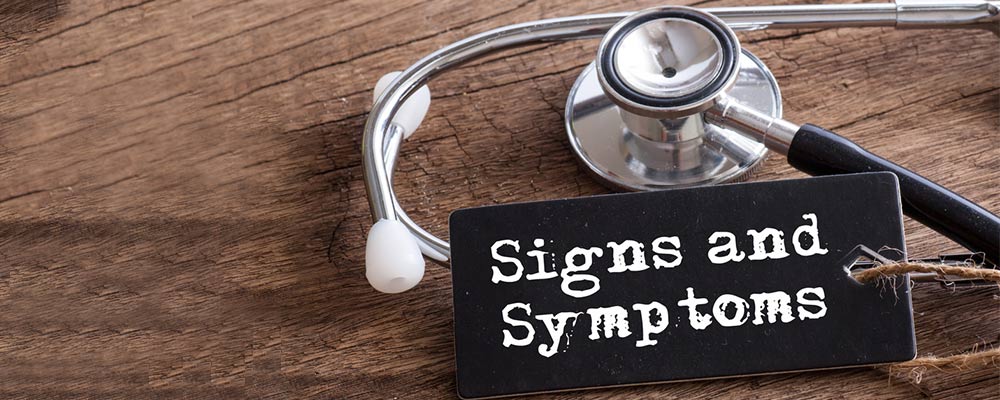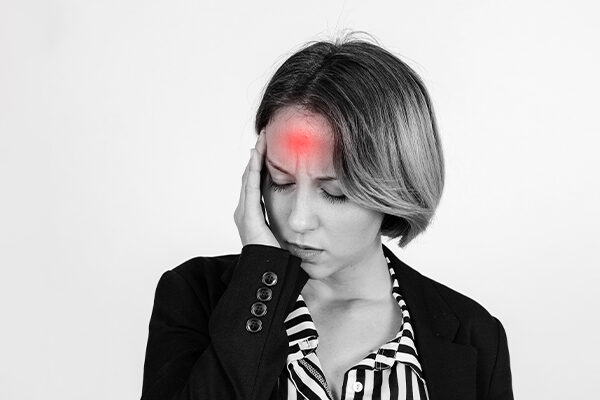Last Updated on June 28, 2022
Overview of Bladder Infection Vs UTI:
Urinary Tract Infection also called UTI is an infection of the lower abdomen that is extremely painful if not treated in time. The infection can have an impact on several different parts of the urinary tract, the most common of which is a bladder infection. UTI symptoms can vary from person to person, and so do the treatment options. It is more prevalent in ladies than gents. Around 11% of the total population of the US has experienced UTIs once in their life.
In this blog, we will be discussing the etiology, symptoms, risk factors, their link with other medical conditions including bladder infection vs UTI, and potential treatment options.
Etiology of Bladder Infection Vs UTI:
Urinary tract diseases typically occur when microscopic organisms penetrate the urinary tract through the urethra and start to reprise in the bladder. Albeit the urinary system is intended to keep out such infinitesimal organisms, these safeguards sometimes fail. At the point when that occurs, microorganisms might grab hold and develop into an all-out disease in the urinary tract.
The most widely recognized UTIs happen principally in females and impact the bladder and urethra.
- Contamination of the bladder (cystitis): This sort of UTI is typically brought about by Escherichia coli (E. coli), a kind of microscopic organism normally viewed in the gastrointestinal (GI) tract. However, in some cases different microbes are responsible.
Sex might prompt cystitis, yet you don’t need to be physically active to foster it. All females are in danger of hemorrhagic cystitis as a result of their anatomy, explicitly, the brief separation from the urethra to the rear-end anus, and the urethral opening to the bladder.
- Contamination or Infection of the urethra (urethritis): This sort of UTI can happen when GI microscopic organisms spread from the anus to the urethra. Additionally, on the grounds that the female urethra is near the vagina, physically sent diseases, like herpes, gonorrhea, chlamydia, and mycoplasma can cause urethritis.
Risk Factors Of Bladder Infection Vs UTIs:

Bladder Infections and Urinary tract infections are normal in ladies, and numerous women experience more than one disease during their lifetimes. Risk factors intended for individuals with a bladder infection and UTIs include:
- Female anatomy: A lady has a more limited urethra than a man does, which abbreviates the distance that microorganisms should venture out to arrive at the bladder.
- Sexual activity: Physically active ladies will generally have more UTIs than do ladies who aren’t physically charged. Having another sexual partner additionally builds your risk
- Certain sorts of contraception: Ladies who use diaphragms for anti-conception medication might be at a higher risk, as well as ladies who utilize spermicidal specialists.
- Menopause. After menopause, a decrease in circling estrogen causes changes in the urinary lot that make you more powerless against contamination.
Other risk factors for UTIs are:
- Urinary tract irregularities: Children brought into the world with urinary tract irregularities that don’t permit pee to leave the body normally or make pee back up in the urethra have an augmented risk of UTIs.
- Blockages in the urinary tract: Kidney stones or an extended prostate can trap pee in the bladder and increment the chances of UTIs.
- A stifled safe framework: Diabetes and different sicknesses that impede the immune system, the body’s guard against microbes can raise the risk of UTIs.
- Catheter use: Individuals who can’t pee all alone and utilize a cylinder (catheter) to pee have an increased risk of UTIs. This might incorporate individuals who are hospitalized, individuals with neurological issues that make it hard to control their ability to pee, and individuals who are incapacitated.
- A recent urinary process: A urinary medical procedure or a test of your urinary tract that includes clinical instruments can both raise your risk of fostering a urinary tract disease.
What Are The Differences In Symptoms Between Bladder Infection Vs UTI?
Urinary tract infections don’t necessarily cause signs and symptoms, yet when they do they might include:
- A solid, relentless desire to pee,
- A burning sensation while peeing,
- Passing regular, limited quantities of pee,
- Pee that seems cloudy,
- Pee that appears red, bright pink, or cola-colored, indicates blood in the pee,
- Solid smelling pee, and
- Pelvic pain, in females, specifically in the central point of the pelvis and near the area of the pubic bone.

The symptoms are more complicated when there is a participation of the kidneys. The list includes:
- Fever,
- Chills,
- Nausea,
- Vomiting, and
- Lower back pain
Classification of UTIs:
The major types of UTIs are:
- Urethritis: As the name implies, urethritis is inflammation of the urethra, the responsibility of which is to take the urine out of the body. Urethritis is most commonly caused by the transfer of bacteria through sexual contact.
- Cystitis: It directs to the inflammation of the bladder. This type is more commonly diagnosed in females. It can also lead to hemorrhagic cystitis.
- Pyelonephritis: It is an infection that involves one or both kidneys. When the bacteria goes up to the kidney it causes inflammation resulting in serious symptoms.
Complicated UTI vs. Uncomplicated UTI:
A complicated UTI is just that, complicated. Due to anomalies in the structure of the urinary tract, the standard of care treatments are not always effective and may take time. Some of the causes are the narrowing of the ureters, and the urethra, a stoppage like kidney stones, or enlarged prostate gland in men. High-dose antibiotics are the treatment of choice in such cases. Complicated UTIs can affect the quality of life and make it challenging to perform day-to-day grinds.
However, in uncomplicated UTIs, there are no anatomical abnormalities. The individual affected has no underlying condition and is otherwise healthy. It is more common in physically active young ladies. Bacteria is the culprit for both complicated and uncomplicated UTIs.
Hemorrhagic Cystitis: What Is It?
Hemorrhagic cystitis is a diffuse fiery state of the urinary bladder because of an irresistible or noninfectious etiology bringing about bleeding from the bladder mucosa. The most well-known cause is bacterial contamination which generally answers instantly to treatment.
Hemorrhagic Cystitis: What Causes It?
Chemotherapy and radiotherapy are the usual culprits in causing hemorrhagic cystitis. Sometimes certain infections are also responsible for causing hemorrhagic cystitis.
How To Treat Hemorrhagic Cystitis?
Usually, antibiotics, antivirals, and antifungals are enough to treat hemorrhagic cystitis that is the result of an infection. However, if chemotherapy or radiotherapy is the culprit then extensive treatment is required such as intravenous fluids, intravesical therapy, etc.
How Do Comorbidities Raise The Chances Of Developing UTIs?
Patients with diabetes and different sicknesses like Multiple Sclerosis, kidney stones, and so forth, that smother the immune system, are more disposed to foster urinary tract diseases in light of the repetitive desire to pee and high glucose levels on account of diabetes. The high sugar level gives an optimal developing environment to microorganisms. Early end and genuine remedies are basic for overseeing consuming urinary lot diseases in diabetics.
How Does UTI Affect Sexual Well-Being?
A UTI can irritate the sensitive tissue in your urinary tract, and sexual activity can upset those tissues extensively more. Sexual activity can moreover raise your risk of complexities and maybe put your partner in danger of getting the disease.
Bladder Infection Vs UTI: What Is The Difference?
A Urinary Tract Infection is an umbrella term for diseases in various pieces of the urinary tract. While cystitis is a disease of the bladder. The microorganisms advance up to the bladder to cause irritation. Not all urinary tract contaminations transform into bladder diseases assuming early intervention occurs.
Cranberry Juice and UTI: Does It Even Work?

One of the most well-known home solutions for UTIs has forever been Cranberry Juice. Research doesn’t completely uphold the utilization of cranberry in the avoidance of UTIs. Be that as it may, cranberry juice and pills have ended up being helpful at times, however, it isn’t generally the situation.
The hypothesis states that consuming cranberry juice makes the pee more acidic which repulses the microscopic organisms like E. Coli which are the typically guilty party in causing UTIs. Nonetheless, with time and investigation, the hypothesis has altered and it is as of now settled that the enhancements in cranberry change the minute organic entities so they don’t stick to the urinary passage.
In spite of the leads, cranberry should be utilized with care as it contains salt oxalates that advance kidney stones. It is likewise dangerous in the event that you are on blood thinners as cranberry can connect with warfarin and actuate dying.
Differences Between Diagnosis Of Bladder Infection vs UTI:
There is no such difference in the diagnosis of UTI and cystitis since cystitis is a type of UTI. Contingent upon the symptoms, doctors prescribe specific tests to analyze the type of UTI you could have. This incorporates Urinalysis and Urine Culture.
On the off chance that the symptoms don’t settle even after treatment, the specialist might recommend the accompanying tests to assess the sort of infection or injury, like the Ultrasound, Cystoscopy, and CT filter.
Home Remedies And Lifestyle Changes To Manage UTIs:
Urinary tract infections can be agonizing, however, you can do whatever it takes to facilitate your inconvenience until antibiotics treat the disease. Follow these tips:
- Drink a lot of water: Water assists with weakening your pee and flushing out microbes.
- Keep away from drinks that might disturb your bladder: Keep away from espresso, liquor, and soda pops containing citrus juices or caffeine until your infection has cleared. They can disturb your bladder and will more often than not bother your continuous or pressing need to pee.
- Utilize a warming cushion: Apply a warm, yet not hot, warming cushion to your midsection to limit bladder strain or inconvenience.
Treatment Options – Bladder Infection Vs UTI:
Since the burning urinary tract contamination is caused by microbes, the specialist will endorse antibiotics to treat the disease. The measurements rely upon the set of experiences and seriousness of the infection.
Patients likewise select a few home cures and natural solutions to treat their condition including drinking lots of water, consuming cranberry juice, eating garlic, adding vitamin C to the eating regime, and dealing with their cleanliness.
Anti-bacterial agents:
Anti-bacterial agents normally are the principal line treatment for urinary parcel contaminations. Which medications are recommended and for how long rely upon your ailment and the kind of microscopic organisms tracked down in your pee?
- Trimethoprim/sulfamethoxazole (Bactrim, Septra, others)
- Fosfomycin (Monurol)
- Nitrofurantoin (Macrodantin, Macrobid)
- Cephalexin (Keflex)
- Ceftriaxone
The group of antibiotic drugs referred to as fluoroquinolones like ciprofloxacin (Cipro), levofloxacin, and others isn’t ordinarily recommended for simple UTIs, as the dangers of these drugs, by and large, offset the advantages for treating uncomplicated UTIs. At times, for example, with a muddled UTI or kidney contamination, your physician could advocate a fluoroquinolone medication on the off chance that there could be no other treatment choices.
Frequently, UTI symptoms clear up within a couple of days after the beginning of treatment. However, you might have to proceed with antibiotics for up to seven days. Taking the whole course of anti-bacterial agents is recommended.
For a simple UTI that happens when you’re generally sound. Your primary care physician might suggest a more limited course of treatment, like taking antibiotics for one to three days. In any case, whether this short course of therapy is sufficient to treat your disease relies upon your specific symptoms and clinical history.
Your physician may likewise recommend an aggravation prescription (pain-relieving) that numbs your bladder and urethra to ease burning while at the same time peeing. Yet torture, for the most part, is feeling much better not long after beginning an anti-microbial.
Treatment proposals:
On the off chance that you have successive UTIs, your physician might make specific treatment proposals, for example:
- Low-portion antibacterial agents, at first for a considerable length of time yet some of the time longer
- Self-determination and treatment, assuming you keep in contact with your physician
- A solitary portion of antibiotics after sex on the off chance that your infections are related to sexual action
- Vaginal estrogen treatment assuming you’re postmenopausal
The Takeaway:
To finish up, a burning urinary tract disease is a troubling condition that can influence your everyday schedule by and large. It disrupts day-to-day errands as well as causes one to feel unwell and exhausted. It additionally unfavorably affects your state of mind and social well-being prompting augmented pressure and uneasiness.
Subsequently, it is crucial to keep your psyche and body loose by embracing unwinding strategies and not letting the conditions (Bladder Infection vs UTI) affect you. And visiting your nearest specialist to plan out the right treatment option for you. Multiple Clinical Research Organizations near you in Michigan are conducting clinical trials on new medications for Uncomplicated UTIs that may be able to help you and countless other people.




